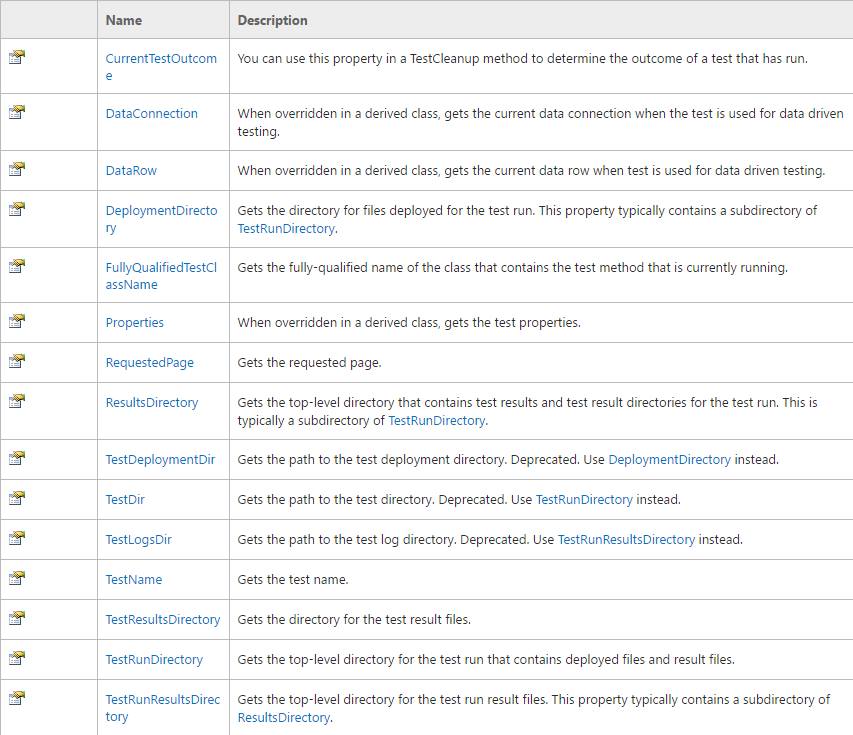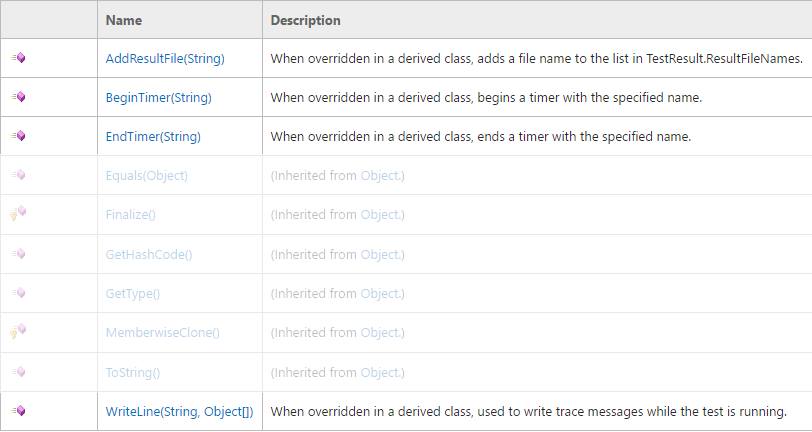So far, in discussing the migration of MSTest to XUnit2, I have only touched on the basics. First, I covered using the XUnitConverter to make the transition a little easier, then I provided an overview of how the basic MSTest concepts tests, test initialization, and test cleanup were supported. In this post I want to look at the confusing dumping group that is TestContext. My goal with these posts is to provide useful search results for those looking for information on XUnit, especially when migrating from MSTest. For a moment though, let me rant about TestContext.
I am sure that there are people out there who totally get all the values and functions TestContext provides; however, other than writing log messages, I have found the TestContext properties wildly confusing and unhelpful. I somehow doubt I am alone. Not only that, but the inconsistent ways a method gets access to the TestContext dependent on whether it is an instance method or a static method makes things confusing1.

TestContext Properties

Looking at the documentation from MSDN (shown above), it should be clear to anyone that TestContext is trying to do a lot of different things. There are methods in there for outputting things to the test trace messages, adding results files, and running timers, and properties for getting all sorts of information from directories for results, to the name of the test, to things related to data driven tests. Overall, it is convoluted and confused; do you know the difference between ResultsDirectory, TestResultsDirectory, and TestRunResultsDirectory? Even after working with MSTest for nearly 10 years, I could not begin to tell you. In my opinion, TestContext does too much and is almost always unintuitive to use, so how does XUnit tackle these things?
Well, first of all, XUnit does not even begin to replace the timer stuff because, well, there are plenty of timer options available in the .NET framework, so just use one of them.
Second, XUnit manipulates the current directory when running tests, so the location retrieved from Environment.CurrentDirectory will be where the tests are running and where test data will live. We will focus on data-driven testing in another post, but suffice to say that you do not need to decipher pages of documentation or debug tests to understand where to find your test data or where to output your test results (if you have something to output, of course).
Finally, if you want to write to the test output, XUnit provides an interface that you can inject into your constructor for doing just that and only that; ITestOutputHelper.
ITestOutputHelper
Since the XUnit documentation is very helpful on how to use this interface, I won't go into great detail here. However, for those looking to replace TestContext.WriteLine, this is what you need to do.
using Xunit;
using Xunit.Abstractions;
public class MyTests
{
private readonly ITestOutputHelper _output;
public MyTests(ITestOutputHelper output)
{
_output = output;
}
[Fact]
public void Test1()
{
var stringValue = "a thing to output";
_output.WriteLine($"My string value is \"{stringValue}\"");
}
}
The test runner observes from the signature of the class constructor that it requires the ITestOutputHelper interface and injects it, making it available throughout the test execution, including during the Dispose method, if present.
Next time, we will take a look at how XUnit tackles sharing initialization across multiple tests. In the meantime, if you are finding these posts useful or have any questions, please leave a comment.
- a property called TestContext with public getter and setter for instance methods; or passed as a parameter for static methods [↩]

